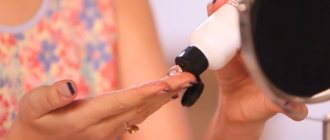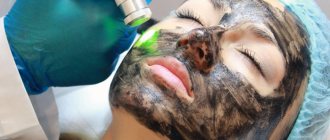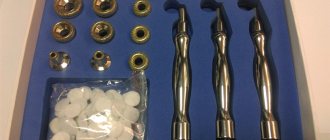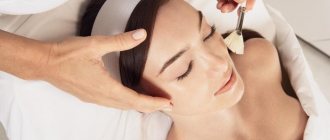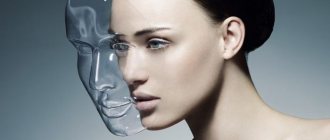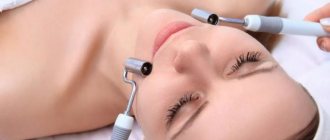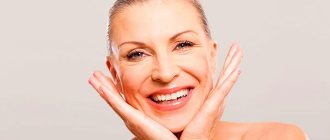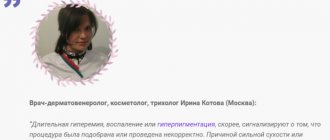With medium peeling, the epidermis dissolves almost completely, and the acid penetrates into living cells. The procedure is carried out using the drug in a concentration of up to 50% only in a clinical setting, and subsequent rehabilitation may take more than two weeks. A prerequisite for obtaining the desired result from such a procedure is strict compliance with all instructions of the specialist who performed the peeling. Indications for medium peeling are deep wrinkles, scars and scars, including acne.
Deep peeling with a 70% drug is carried out only in a hospital setting and is considered essentially a surgical procedure. Since the top layer of skin is completely destroyed, the procedure will be painful and is performed using anesthesia. And the result during the rehabilitation period will be generally similar to how the skin recovers after a severe sunburn, i.e. with significant erythema, peeling and even peeling of the burned layer of skin. This procedure triggers collagenosis in the deep layers of the skin, thus completely renewing the epidermis. This technique is indicated for multiple deep wrinkles, deep scars, severe skin unevenness, and significant pigmentation disorders.
What is glycolic acid
Glycolic, or hydroxyacetic, acid has been successfully used in cosmetology for decades to rejuvenate and improve skin health. It is synthesized mainly from sugar cane, grapes, and beets.
Refers to fruit acids, used primarily for surface exfoliation. The soft, gentle action allows the procedure to be prescribed even to patients with sensitive skin.
Beneficial properties of glycolic acid:
- stimulates the active synthesis of collagen and fibroblasts, helps smooth out wrinkles of varying degrees, increase skin density;
- the small molecular weight allows it to easily penetrate into the deep layers, destroying the bonds between dead cells, providing effective cleansing, and giving a pronounced detox effect;
- the penetration of hydroxyacetic acid into the intercellular space leads to its swelling and enlargement, resulting in tissue lifting;
- anti-inflammatory properties allow you to cope with acne and comedones, stop and prevent the spread of infection;
- a pronounced moisturizing effect is noted due to the restoration of pH levels and normalization of lipid-carbohydrate metabolism.
Chemical peeling with glycolic acid differs in the degree of exposure or concentration of fruit acid:
- Surface - the acid concentration used does not exceed 40%, pH level from 2.5 to 4.5. Delicate exposure leads to exfoliation of the upper layer of the epidermis. Peeling 25% is prescribed at a young age to care for problematic, inflammation-prone dermis. As a result, it is possible to improve color and structure, narrow pores, and get rid of fine wrinkles.
- Medium - the composition includes acid with a concentration of 50% to 70%. It is carried out exclusively in a salon by an experienced cosmetologist. A procedure is prescribed to get rid of pronounced wrinkles, smooth out scars, cicatrices, acne marks, and achieve a lifting effect.
- Deep - acid with a concentration of 70% is used. It is performed on an outpatient basis by a dermatocosmetologist or plastic surgeon. It is accompanied by a long painful recovery and there are risks of complications. Prescribed for rejuvenation, tissue regeneration, carried out at the stage of preparation for plastic surgery.
Attention! In addition to glycolic acid, the peeling composition may include other fruit acids - citric, lactic, pyruvic, but in lower concentrations. The formula is selected depending on the individual characteristics of the patient’s skin.
The essence of peeling
This type of exfoliation has a soft, delicate effect and a short recovery period. But the use of glycolic acid is not able to solve complex aesthetic problems; the main task is general improvement of the condition, improvement of the integument. For facial care and aging prevention, you can use fruit peeling at home with an acid concentration of no more than 10%.
To restore oily, inflammation-prone dermis, get rid of hyperpigmentation, and a network of wrinkles, you should turn to professionals. Without training in the protocol, it is difficult to control the depth of exposure to the exfoliant, which can lead to complications and long-term rehabilitation.
Advantages and disadvantages
| pros | Minuses |
|
|
Indications for use
Peeling with glycolic acid is prescribed to prevent aging, as well as to improve the condition of oily, inflamed dermis:
- hyperpigmentation after pregnancy or photoactivity;
- sebaceous plugs;
- dryness, dehydration, peeling;
- traces of acne, blackheads;
- impaired functioning of the sebaceous glands, seborrhea;
- decreased tone and elasticity;
- the first signs of aging;
- shallow stretches.
Prescribed starting from adolescence to normalize the condition of the oily dermis. Used in a complex anti-aging program to enhance the effect after laser, mechanical cleaning, as preparation for plastic surgery.
Course of procedures
There are certain programs for glycolic peeling.
- Prevention of biological aging of the skin - 10 procedures once every 7-14 days. Maintenance course - 1-2 times a year.
- Prevention of photoaging - 5-10 procedures once every 7-10 days.
- Oily skin, hyperkeratosis, hyperpigmentation - 5-12 procedures once every 7-10 days.
- Correction of age-related changes, superficial scars - 3-5 procedures once every 1.5-2 months.
- Preparation for invasive methods of exposure - 5-10 procedures once every 10-14 days.
Peeling effectiveness
To achieve the desired aesthetic goals, cosmetologists recommend peeling courses. The number of procedures depends on the condition of the skin; on average, 4 to 10 sessions are required at intervals of once every 2 weeks. How often can you exfoliate with glycolic acid, a specialist will answer after assessing the condition of the integument.
Effect of the procedure:
- toxins and oxidants are removed;
- the face looks fresh, renewed;
- indicators of firmness and elasticity improve;
- tone is evened out;
- pigmentation and acne marks become less noticeable;
- slight lifting is noted.
Using glycolic peeling at home
Glycolic acid for self-use is used in a concentration of up to 10% and a pH level of no more than 4 with a frequency of 4-6 procedures once every 7-14 days. When carrying out the technique, they are guided by standard instructions.
- Gentle cleansing and degreasing of the skin.
- Protection against peeling of lips and eyebrows with Vaseline.
- Apply the composition without pressure in one layer using a cotton pad or brush to the target areas: nose, chin, forehead, cheeks. Exposure time is 2-15 minutes.
- Use a slightly alkaline neutralizer if the burning sensation and redness intensifies, followed by rinsing with cold water.
- Using a soothing mask and moisturizer.
- Compliance with course post-procedure recommendations.
Types of drugs
Beauty honey - the line is represented by 10% and 30% exfoliants. In addition to glycolic acid, the composition contains lactic, malic, tartaric, and hyaluronic acid. Gentle removal of keratinized cells ensures the launch of rejuvenation processes. As a result, pigmentation lightens, the skin looks well-groomed and refreshed. Hydrobalance is normalized, immune properties are increased. You can buy 50 ml 10% for 1300 rubles, 50 ml 30% - 2142 rubles.
EASY PEEL peeling gel with chizaton based on 10% glycolic acid belongs to the natural series. Prescribed for dry, dehydrated skin with the first signs of aging. Restores firmness and elasticity, promotes skin compaction. Stimulates your own collagen synthesis, provides a slight lifting effect. The composition contains glycolic acid and chitosan and does not require the use of a neutralizer. You can buy 30 ml for 880 rubles.
Premium GLIKOACTIVE - a line of professional cosmetics produces peelings with acid concentrations of 5%, 25%, 50%, 70%. A wide range of products allows us to develop programs individually for each client. As a result, deep renewal occurs, regeneration processes are launched, smooth relief is restored, pigmentation and acne marks are whitened. The cost of premium 200 ml is from 2000 rubles. up to 3500 rub. depending on the acid concentration.
Belita glycolic gel 50% Vitex is suitable for use on all skin types and belongs to the natural line. In addition to glycolic, the formula contains hyaluronic acid, which increases the level of hydration. The procedure is prescribed for acne, hyperpigmentation, signs of chrono and photoaging. Collagen synthesis is activated, the integument becomes denser and more elastic. You can buy 250 ml for 950 rubles.
Compliment glycolic peeling from a domestic brand is intended for the correction of acne marks and rejuvenation. Solves a number of aesthetic problems, launches renewal processes, increases cellular immunity, and blocks the spread of infection. The action of the acid regulates the process of sebum regulation and prevents the formation of sebaceous plugs. You can buy a 7 ml compliment sachet for 30 rubles.
Mary Kay's TimeWise Repair Revealing peeling is designed for aging skin. The formula contains glycolic acid, coconut extract, as well as a complex of antioxidants, vitamins, and minerals. After use, it is possible to reduce the number and depth of wrinkles, refresh color, and strengthen thin capillaries. Witch hazel extract soothes redness and inflammation, tightens enlarged pores. Buy Mary Kay 48 gr. possible for 3500 rubles.
Caudalie Glycolic Peeling Mask is suitable for all skin types. It has no age restrictions and successfully copes with dryness, sagging, and wrinkles. Restores carbohydrate-lipid metabolism, improves the condition of oily dermis. The active components of natural peeling are glycolic acid, viniferine, tannins, papaya enzymes. Suitable for home use, gives the skin a flawless, even tone. You can buy 75 ml for 1890 rubles.
Famous beauty blogger Marina Haifa offers milk-glycol toner in her home facial care program. As a result of application, it is possible to restore texture, even healthy color, and narrow pores. You can buy a cosmetic product by placing an order on the manufacturer’s official website.
Isis pharma peeling cream with 12% glycolic acid is intended for skin care at home. The low concentration of acid helps remove keratinized epithelium without side effects or complications. In addition to glycolic acid, the formula contains plant extracts and minerals. After use, an improvement in color and structure is observed, pores become narrower, and the skin becomes less susceptible to aggressive environmental factors. You can buy Isis Pharma 30 ml for 900 rubles.
Peeling gel Pleyana with glycolic acid 10% is one of the best surface cleansing products. The procedure is indicated for all skin types, to maintain normal condition, as well as solve a whole range of problems. The formula includes glycolic acid, urea, aloe vera, echinacea, calendula, centella, and lemon balm extracts. The product can be used at home or performed in a salon. Used in the treatment program for acne, seborrheic dermatitis, effective for pigmentation, scars, and bumpy relief. You can buy pleyana in the form of a 5 ml sachet for 140 rubles, or the full version 200 ml for 1260 rubles.
Glycolic peeling 70 percent Kosmoteros is used exclusively in a salon setting. It should be used for non-surgical rejuvenation and correction of defects in dermatological diseases. The active ingredient is glycolic acid, which ensures the launch of collagen synthesis. As a result, it is possible to increase the density of the skin, achieve a pronounced lifting effect, and get rid of scars. You can buy 30 ml for 870 rubles.
All inclusive delicate peeling from a domestic brand is suitable for all skin types without age restrictions. It has a powerful rejuvenating and lifting effect, restores skin tone. Suitable for frequent use at home. The composition contains glycolic, citric, malic acid, campfire oil. You can buy 50 ml for 190 rubles.
Glycolic peels on Arcadia Youth skin chitozone are presented in 20%, 40%, 70% concentration. The product line allows you to choose a formula to solve individual aesthetic problems. Peeling gel has an anti-inflammatory and moisturizing effect, restores the protective barrier of the dermis, and blocks melanin synthesis. As a result of application, a structural renewal of the dermis occurs. Suitable for all skin types, cosmetics are used exclusively in salon conditions. The complex contains glycolic, lactic, malic, and tartaric acid. You can buy 50 ml of 20% for 730 rubles, 40% - 900 rubles, 70% - 1160 rubles.
Medical Collagen 3D - peeling gel is intended for professional use. Suitable for sensitive, irritated dermis, has anti-inflammatory, regenerating effects. The formula contains glycolic acid 5% and marine chitosan. Increases firmness, elasticity, tightens pores, removes toxins. Price 30 ml - 785 rub.
Professional glycolic peelings Martinex are available in concentrations of 35%, 50% and 70%. Performed correctly in a salon, the cosmetologist will be able to choose the optimal formula. Prescribed for aging skin, seborrheic dermatitis, acne, hyperpigmentation, as a preparation for other procedures. Only cosmetologists can purchase.
Glycol solution 50% Kenvel is prescribed to moisturize and rejuvenate the skin. Helps cope with the first signs of aging, stretch marks, and acne marks. Activates metabolic processes, restores breathing, improves microcirculation. Suitable for use on all skin types, including oily, inflamed and sensitive. Cost 2600 rub.
Glycoline glyco extreme peel professional product contains 25% AHA acids. Allows you to cope with pigmentation, remove toxins and metabolic products. Restores elasticity, stimulates collagen synthesis. You can buy a package of 24 ampoules of 3 ml for 14,000 rubles.
The Alerana brand specializes in the problem of hair loss. The company's specialists recommend periodically carrying out peeling procedures for the scalp. As a result of deep cleansing, it is possible to get rid of dandruff, seborrhea, and activate the nutrition of the follicles.
Preparatory stage
During the consultation, the cosmetologist assesses the condition of the skin and selects the optimal acid concentration. Testing for a possible allergic reaction is required; burning, irritation, and redness are contraindications. The seasonality of cosmetic care is also important; it is not recommended to take the course in the spring-summer period, but in some regions, with reduced solar activity, exfoliation is allowed in March.
Preparation rules:
- You need to stop taking medications a month before, you can’t sunbathe, or carry out procedures that injure the skin;
- During the week you cannot visit the sauna, bathhouse, or gym;
- For patients with dry skin, as well as after 35 years, it is recommended to pre-conduct mesotherapy and biorevitalization;
- to improve the effect, experts recommend using fruit acids in home care with a concentration of no more than 1 percent;
- You may need to take a course of antiviral drugs.
How is the procedure done in the salon?
You can trust glycolic exfoliation only to an experienced cosmetologist. Only a specialist will be able to select the optimal acid concentration to solve individual aesthetic problems. The procedure itself is fairly quick, lasting no more than half an hour.
Stages:
- Makeup remover is carried out using professional cosmetics, gentle products gently cleanse without disturbing the pH level.
- A low concentration glycol solution is applied; in some cases this preparation step is omitted.
- Glycolic acid of the selected concentration is applied along the massage lines. The procedure time is controlled by a cosmetologist.
- When red spots appear, a neutralizer is applied. The patient may feel a slight burning sensation, tingling, discomfort is eliminated with the help of a stream of cold air.
- Finally, a mask or cream with restorative, regenerating, moisturizing properties is applied.
Healing period
During the first hours, redness, swelling, and puffiness may be observed, which disappear on their own after a few days. On the third day, it is possible to separate the epithelial plates; to speed up the renewal, you can use medicinal ointments or moisturizing creams.
Attention! The entire recovery period lasts no more than a week. It is important to follow the cosmetologist’s recommendations to prevent complications and achieve a lasting aesthetic effect.
Recovery period rules:
- Limit touching your face for the first 24 hours;
- for cleansing, use gentle foams with a neutral pH;
- do not use new cosmetic products to avoid an allergic reaction;
- Bepanten, Panthenol or creams based on aloe vera and hyaluron will help speed up healing;
- makeup can be used after complete recovery, carefully select powder and foundation with an anti-comedogenic effect;
- It is recommended to give up alcohol, spicy and salty foods for a week;
- you cannot sunbathe, visit the sauna, swimming pool, solarium, or gym for a month;
- Be sure to use sunscreen with the maximum SPF factor.
Features of care after the procedure
It was previously said that the effects of peeling can be strong and cause a number of responses in the body. In fact, the effect of acid has been compared to a burn. Therefore, before the procedure, the doctor prepares not only the skin, but also the patient himself - he tells in detail what rules must be followed, how the rehabilitation period proceeds.
One of the frequent questions that patients ask is how quickly the pain and burning go away. Usually, the discomfort goes away with the end of the session. In case of hypersensitivity, it may persist in a mild form the next day.
Unpleasant sensations usually go away with the end of the session
Potential reactions also include swelling and redness of the treated area. Their intensity depends on the characteristics of the skin and the depth of peeling. But most often the period of maximum manifestation is several hours after manipulation.
Sometimes brown crusts form. They should never be removed, as additional trauma may lead to scarring or areas of hyperpigmentation.
Peeling is an expected skin reaction after peeling. To reduce discomfort, you can use moisturizing creams recommended by your doctor.
Your skin may peel, and that's normal.
Therapeutic effects, the time of their manifestation, the boundaries of normal sensations are discussed with the doctor. If an unexpected reaction occurs, you should contact a specialist.
The course consists of sessions, the number of which is determined by the doctor. Usually from 4 to 10 manipulations are performed. The amount may vary depending on the initial condition of the skin, age, and problems being solved.
The doctor, considering each individual case, determines the required number of procedures
Skin care continues between sessions. Usually it involves treatment with weak solutions of hydroxyacetic acid to consolidate the result.
It is best to plan glycolic peeling in the autumn-winter season, so as not to expose the skin to the aggressive effects of ultraviolet radiation. And even when the sun is not too active, it is worth using sunscreen with an SPF effect of at least 30.
It is better to carry out the procedure in autumn or winter
Important ! During the course, you should avoid active water procedures, visiting the sauna, bathhouse, and swimming pool.
How much does the procedure cost in salons?
Glycol peeling can be performed in many aesthetic clinics. The cost depends on the concentration, the acid used, as well as the brand of professional cosmetics and additional procedures.
The price varies from 1500 rubles. and up to 15,000 rubles, superficial, medium or deep exfoliation is possible. A specialist will be able to tell you how much a session will cost at the consultation stage.
Glycolic peeling can also be done at home. For comprehensive skin care, prevention of age-related processes and general improvement of skin condition, low concentration solutions are used. If you follow all the manufacturer's recommendations, you can achieve a stunning transformation effect.
Contraindications
There are a number of contraindications for performing glycolic exfoliation:
- rosacea;
- recent tanning;
- pronounced capillary network;
- wounds or inflamed pimples;
- active form of herpes;
- carrying a child or breastfeeding;
- moles and warts;
- heart or vascular disease;
- dermatitis;
- asthma;
- oncological diseases;
- diabetes.
Expert opinion
Elena Apostolyuk
Cosmetologist
Self-peeling should not be done for dry or combination types of epidermis, since the incorrect concentration of the active substance can lead to a deterioration of the initial condition of the skin.
Precautionary measures
Chemical exposure has a number of limitations; before carrying out it is important to familiarize yourself with the main contraindications:
- pregnancy, lactation;
- spring-summer period;
- presence of warts, papillomas;
- herpes;
- Fitzpatrick skin types 4 and 5 - dark skin, dark hair and eyes;
- damage to the integrity of the integument;
- inflammatory processes;
- individual sensitivity to the components of the composition;
- rosacea;
- chronic diseases;
- fresh tan;
- carrying out chemotherapy, taking retinoids, hormonal drugs.
Subject to the rules of preparation, recovery and protocol, side effects are minimized. Redness, swelling, and peeling quickly disappear, allowing you to enjoy the result of renewed skin. But in some cases complications may occur:
- 1st and 2nd degree burns are a consequence of violation of the rules for exfoliation, incorrectly selected acid concentration;
- pigmentation is a consequence of violation of the rules of the recovery period or a sign of skin photosensitivity;
- irritation, itching, pimples, red spots appear when the protocol is not followed or contraindications are not identified; in case of swelling and difficulty breathing, you should immediately consult a doctor;
- increased dryness can be caused by the fact that the acid has simply burned the protective barrier; thinning of the skin requires long-term use of moisturizing, regenerating, nourishing cosmetics.
Advantages and disadvantages
Before you decide to undergo peeling with glycolic acid, it is worth knowing about its features.
Advantages:
- has a soft, gentle effect;
- Suitable for all skin types;
- has no age restrictions;
- harm is minimized due to surface action;
- short recovery period.
Flaws:
- performed according to indications by a cosmetologist;
- requires preparation and allergy testing;
- Cannot be done during periods of solar activity, spring, summer.
Salicylic peeling is prescribed for oily, problematic dermis with frequent rashes and inflammation. Effectively cleans sebaceous plugs and regulates lipid synthesis. Salicylic acid tones and normalizes metabolic processes. It is a superficial type of chemical peeling and has a short recovery period. Combines well with other types of fruit acids.
Peeling with lactic acid is prescribed for stressed, irritated, dehydrated skin for the purpose of moisturizing and rejuvenating. Superficial exfoliation has a gentle effect on the skin, removes toxins and oxidants. The composition can be used for the neck, décolleté, and arms.
Opinion of cosmetologists
Professionals share their experience of using glycolic acid in peeling programs.
The cosmetologist asks why complications could arise after using 40% glycolic acid, and whether using Bepanthen is enough for healing.
The specialist writes that to lighten post-acne, in some cases an additional course of peelings with lactic acid is required, it all depends on the degree of scarring and pigmentation.
A cosmetologist writes about the use of Mirra glycolic peeling and its harsh effect on the skin.
Recovery period after glycolic peeling
- Do not use decorative cosmetics for 5-7 days.
- Use gentle cleansers, special regenerating, softening and soothing agents for 3-7 days to avoid forced peeling off of crusts (Bepanten, preparations with hyaluronic acid).
- Avoid aggressive drugs and procedures (scrubs, polishing) for 7-14 days.
- Do not visit the bathhouse, swimming pool, sauna or engage in heavy physical exercise for 7 days.
- Eliminate the influence of solarium, do not sunbathe for 14 days.
- Always use sunscreen with an SPF of 30 to 50.
Side effects
- Swelling is an expected reaction to a violation of the skin barrier within 2-3 days when using peeling.
- Redness is a natural reaction that lasts from a few hours to 3 days, depending on the concentration of glycolic acid in the products used.
- Peeling after a glycolic peel is the removal of superficial dead cells, which can last up to 7 days.
- Burns are undesirable phenomena that occur due to incorrect selection and exposure time of acid. When they occur, treatment is carried out with cold water and specialized anti-burn medications are applied.
- Hyperpigmentation and dry skin are response processes if recommendations are not followed before and after the procedure.
- An allergic reaction (rash, burning, redness, itching) occurs when the medical history is incorrectly collected. A preliminary test test is required in the area of the elbow or wrist in the form of peeling for 7-10 minutes to identify possible manifestations. When they occur, antihistamines are prescribed (for example, Zodak).
Patient reviews
On the Internet there are mostly positive reviews after using glycolic acid.
A user writes about a positive experience with a course to get rid of acne spots.
A participant describes his experience using 10% glycolic acid and experiencing epithelial peeling.
The user writes about the risks of complications of using peeling with a high concentration of acid at home, even in the presence of a neutralizer.
The participant describes his experience of peeling, the unsatisfactory effect, and the long-term recovery of the skin.
Results, before and after photos
The effectiveness of a correctly carried out course of procedures is amazing. And the peeling itself is quite comfortable for women: it does not cause pain and differs from other types in the speed of recovery.
